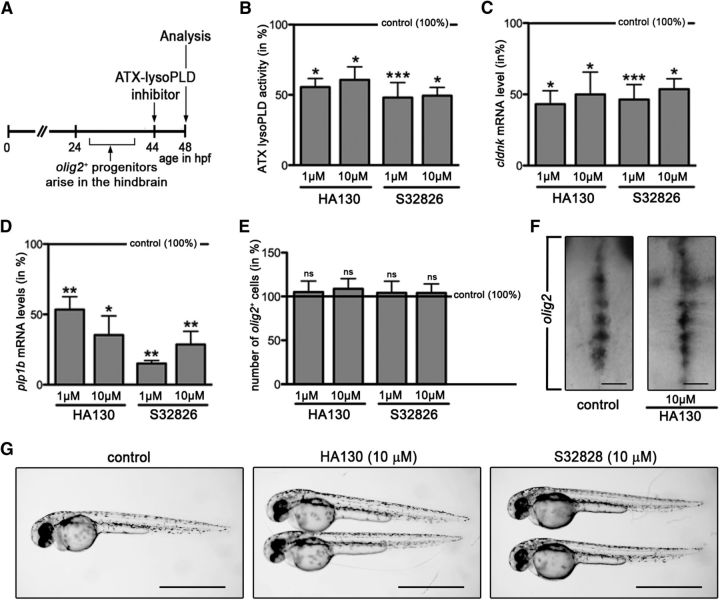Figure 2.
In the developing zebrafish, inhibition of the lysoPLD activity of ATX during early stages of OLG differentiation leads to a reduction in the levels of OLG-enriched transcripts without apparent effects on the number of olig2-positive cells. A, Experimental design. Embryos were treated with the ATX–lysoPLD inhibitors HA130 and S32826 at a time point when newly specified OLG progenitors start to differentiate. B, Bar graph depicting ATX–lysoPLD activity in whole embryos as assessed by using the fluorogenic substrate FS-3. C, D, Bar graphs illustrating mRNA levels for the OLG marker genes cldnk (C) and plp1b (D) in whole embryos as determined by real-time RT-qPCR analysis. E, Bar graph showing the number of olig2-positive progenitors in whole embryos as determined through whole-mount in situ hybridization. F, Representative extended focus images of whole-mount embryos after in situ hybridization with a probe specific for olig2. Dorsal views over the hindbrain are shown with anterior to the top. Scale bars, 50 μm. G, Representative bright-field images of control (vehicle-treated) and ATX–lysoPLD inhibitor-treated embryos at 48 hpf. Scale bars, 1 mm. For all bar graphs, control (vehicle-treated) values were set to 100% (see horizontal line), and experimental values were calculated accordingly. Data shown represent means ± SEMs. ns, Not significant; *p ≤ 0.05, **p ≤ 0.01, ***p ≤ 0.001.

